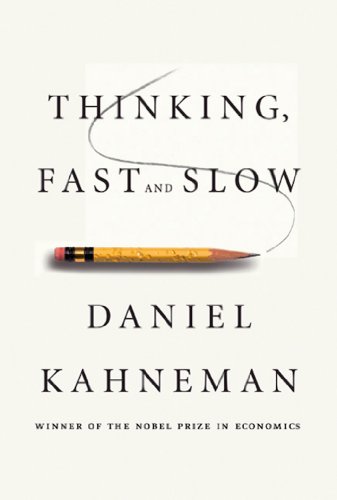

This article is an excerpt from the Shortform summary of "Thinking, Fast and Slow" by Daniel Kahneman. Shortform has the world's best summaries of books you should be reading.
Like this article? Sign up for a free trial here .
What is global thinking? How does it differ from narrow framing, and why does it help in decision-making?
Global thinking is the ability to see the big picture and consider every combination of options to find the optimum one. Global thinking is mentally taxing and therefore hard to do, and we usually fall back on “narrow thinking” instead.
We’ll cover how global thinking differs from narrow framing and how global thinking can help you make better decisions.
Global Thinking
When you evaluate a decision, you’re prone to focus on the individual decision, rather than the big picture of all decisions of that type. The big picture view is part of global thinking. A decision that might make sense in isolation can become very costly when repeated many times.
Consider both decision pairs, then decide what you would choose in each:
Pair 1
- 1) A certain gain of $240.
- 2) 25% chance of gaining $1000 and 75% chance of nothing.
Pair 2
- 3) A certain loss of $750.
- 4) 75% chance of losing $1000 and 25% chance of losing nothing.
You likely gravitated to Option 1 and Option 4.
But let’s actually combine those two options, and weigh against the other.
1+4: 75% chance of losing $760 and 25% chance of gaining $240
2+3: 75% chance of losing $750 and 25% chance of gaining $250
Even without calculating these out, 2+3 is clearly superior to 1+4. You have the same chance of losing less money, and the same chance of gaining more money. Yet you didn’t think to combine all unique pairings and combine them with each other! Combining here is an example of global thinking.
This is the difference between narrow framing and global thinking. The ideal global thinking is to consider every combination of options to find the optimum. This is obviously more cognitively taxing, so instead you use the narrow heuristic—what is best for each decision at each point?
Yet each single decision in isolation can be hampered by probability misestimations and inappropriate risk aversion/seeking. When you repeat this single suboptimal decision over and over, you can rack up large costs over time.
Examples: Global Thinking v. Narrow Framing
Practical examples:
- If given a highly profitable gamble (e.g. 50-50 to lose 1x or gain 1.5x), you may be tempted to reject the gamble once. But you should gladly play 100 times in a row if given the option, for you are almost certain to come out ahead.
- In a company, individual project leaders can be risk averse when leading their own project, since their compensation is heavily tied to project success. Yet the CEO overlooking all projects may wish that all project leaders take on the maximum appropriate risk, since this maximizes the expected value of the total portfolio.
- The opposite scenario may also happen: in a company, leaders of individual projects that are failing may be tempted to run an expensive hail-mary, to seek the small chance of a rescue (because of overweighting probabilities at the edges). In global thinking, the CEO may prefer to shut down projects and redirect resources to the winning projects.
- A risk-averse defendant who gets peppered with frivolous lawsuits may be tempted to settle each one individually, but in global thinking, this may be costly compared to the baseline rate at which it would win lawsuits (let alone settling lawsuits invites more lawsuits).
- Appliance buyers may buy individual appliance insurance, when the global thinking of all historical appliances may show this is clearly unprofitable for individuals.
Get Better at Global Thinking
To get better at global thinking, adopt risk policies: simple rules to follow in individual situations that give a better broad outcome. Examples:
- Always take the highest possible deductible for insurance.
- Check your stocks only once a quarter. Don’t trade on emotion.
- Never buy extended warranties.
- Always prioritize projects by return on investment (ROI) or internal rate of return (IRR), not by other confounding reasons.)
- (Shortform suggestions: treat your time as costing $X per hour. Avoid spending time on activities that are unprofitable at this rate, even if you have a sunk cost.
- You win a few, you lose a few. Don’t obsess over any individual outcome.
- Reduce all decisions down to a single fungible metric, in the broadest account possible, to allow global calibration.
- Decisions around human life can be assessed in terms of a single metric like Quality-adjusted life years per $. This way, repairing glaucoma can be compared to childhood cancers.
- Projects and investments should be considered in terms of ROI or rate of return, so that all possible spending can be assessed on the same scale from a global account.
- Personal decisions can be considered in terms of happiness per $ or per hour.
- Deliberately consider the broad range of alternatives for scarce resources, such as time, labor, and money. Define the global set of opportunities, rather than focusing on the narrow account.
Mental Accounts and Sunk Costs
Related to global thinking – we have a tendency to bin outcomes into separate accounts. This provides organization and simplifies calculations, but can become costly. People don’t like to close accounts with a negative balance.
Not using global thinking has its downsides. Examples of when binning is harmful:
- Novice stock traders see each stock in isolation, selling to capture gains and keeping losers to recover losses, when the opposite is a more profitable strategy. Experienced stock traders have the broader framing that the portfolio of stocks is more important than any individual stock.
- Sunk cost fallacy occurs when you focus on the item at hand, rather than a global view of all assets and possibilities.
- For example, someone who buys a movie ticket is more willing to drive through a snowstorm to see the movie, compared to someone who was gifted the ticket. If the first person were willing to broaden the framing beyond the single ticket to include the other uses of his time, he might make a different decision.
- In companies, a CEO who has made sunk costs unsuccessfully is often replaced. The new CEO is unencumbered by the mental accounting and can objectively cut losses.
Reversals and Global Thinking
Because of a narrow frame, System 1 doesn’t know what information it’s missing. It doesn’t consider the global set of possibilities and make decisions accordingly. This can lead to odd situations where you make one set of decisions when considering two cases individually, then a contradictory decision when you consider them jointly.
Consider a nonprofit that reduces plastic in the ocean to avoid poisoning and killing baby dolphins. How much are you willing to donate to support the cause?
Now consider the discovery that farmers are at significantly higher risk of skin cancer because of the time they spend outdoors. How much are you willing to donate to a nonprofit that reduces cancer for at-risk groups?
You are likely more willing to pay a higher amount for the dolphins than the farmers. In isolation, each scenario engages a different “account” and intensity of feeling. Saving baby dolphins employs the “save the animals” account, and baby dolphins is high on the scale (relative to saving wasps). You intensity match the high emotion you feel to an amount you’re willing to pay.
In contrast, the farmer skin cancer example evokes a “human public health” account, in which farmer skin cancer is likely not as high a priority as baby dolphins is on the saving animals account. Emotion is lower on this account, so the donation is lower.
Now consider the two examples together. You have the option of donating to a dolphin-saving non-profit, or a human cancer-reducing non-profit. Which one are you more willing to pay for? Likely you now realize that humans are more important than animals, and you recalibrate your donations so the second amount exceeds the first.
Judgment and preferences are coherent within categories, but may be incoherent when comparing across categories and using global thinking.
Problems can arise when you don’t have a clear calibration of a case to the global set of cases. Examples:
- Rulings for court cases can be miscalibrated across the judicial system. When considered in isolation, a court case involving a poisoned child is assigned a lower judgment than a case involving embezzlement of $10 million. When considered jointly, the poisoned child amount exceeds $10 million, since there is now an anchor. Yet in the US legal system, jurors are not allowed to consider other cases when assessing damages, so this miscalibration may not be easily corrected.
- Government agency fines make sense within the context of the agency, but are inconsistent between agencies. A worker safety fine may be $7k, while a wild bird conservation violation may cost $25k.
- (Shortform example: salespeople typically compare what they’re selling to poorer alternatives, but they omit superior alternatives or entirely different ways to spend your money that might be better.)
- (Shortform example: when reducing spending, keeping separate accounts can lead to disproportionate attention. In the “coffee” account, reducing spend by $200/year seems like a big win, since the base is low. But the bigger absolute savings might be in reducing rent by moving to a smaller house, which might save $5,000/year.)
Global thinking helps you see the big picture and make comparisons across categories. This leads to better decisions.
———End of Preview———

Like what you just read? Read the rest of the world's best summary of "Thinking, Fast and Slow" at Shortform . Learn the book's critical concepts in 20 minutes or less .
Here's what you'll find in our full Thinking, Fast and Slow summary :
- Why we get easily fooled when we're stressed and preoccupied
- Why we tend to overestimate the likelihood of good things happening (like the lottery)
- How to protect yourself from making bad decisions and from scam artists






